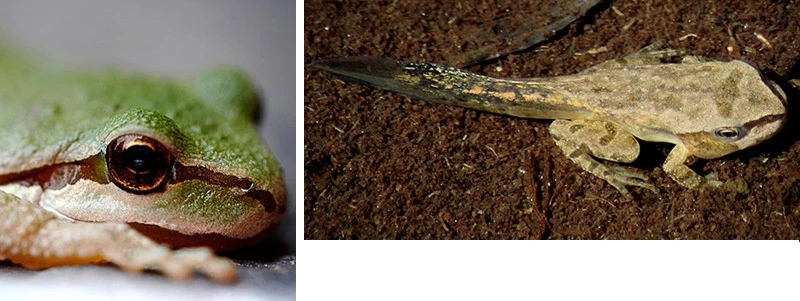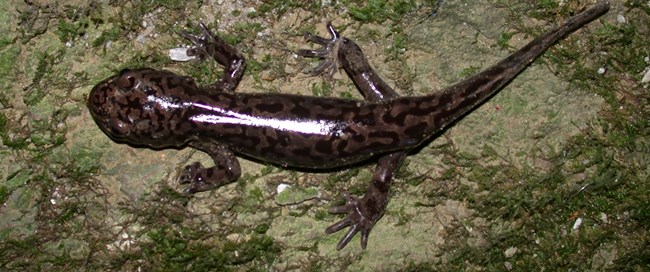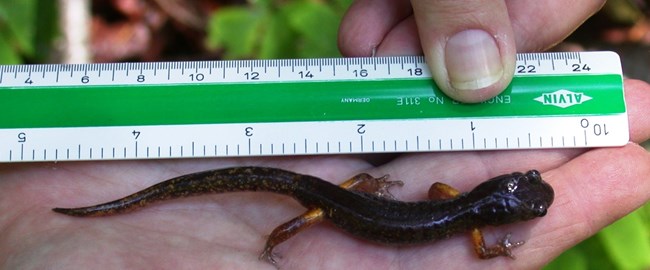|
Amphibians appreciate the cool, wet shelter of caves and are sometimes seen along the tour route of the Oregon Caves. Amphibians are cold-blooded meaning their body temperature depends on the temperature of their environment. They spend part of their lives in water and the remainder on land. In their early stages of life they are predominanlty found in water. As they become adults, they becomed more adapted to life on land.
FrogsOn the Monument you may see or hear the Pacific Tree Frog (Pseudacris regilla). It is the smallest and most commonly seen and heard frog in Oregon. It has several common names like the Northern Pacific treefrog, Northwest chorus frog and Pacific chorus frog. It can change color from green to brown and all shades in between in just a matter of minutes. 
NPS Salamanders

NPS The Pacific Giant Salamander (Dicamptodon tenebrosus) is the largest amphibian in Oregon, often reaching up to 14 inches in length. They are carnivous and willing to eat just about any creature as long as it can fit in its mouth. This includes other salamanders, small rodents, and fish. They are also known as one of the few salamander species to vocalize, making croaking or barking sounds. Pacific giant salamanders live in small to midsized mountian streams and can also be found under logs or rocks in moist, riverside forests . After heavy rains they may wander about the leaf litter and small branches on the forest floor. 
NPS The Ensatina salamander belongs to a group of plethodontids- lungless salamanders that breather entirely through their skin. These salamanders are found in moist environments of forested areas, clearings, and grasslands under debris like logs. They are typically light brown in color with black specks, yellow legs, and lighter colored bellies. They can reach up to 5 inches in length compared to Pacific Giant Salamander which reaches up to 14 inches. |
Last updated: October 11, 2017
